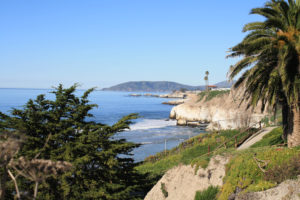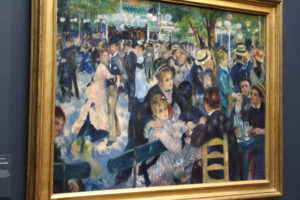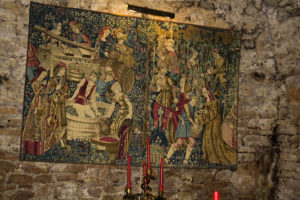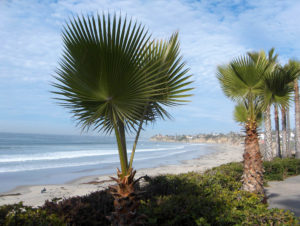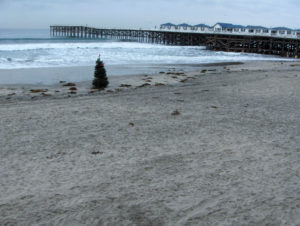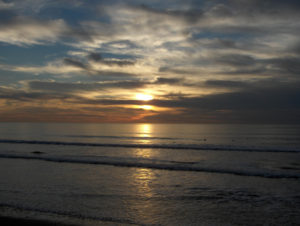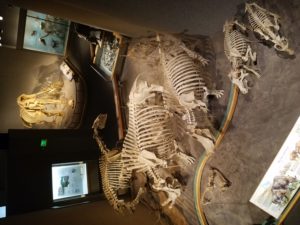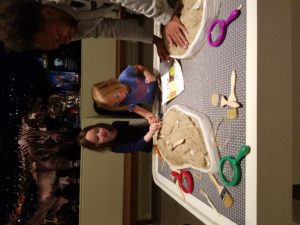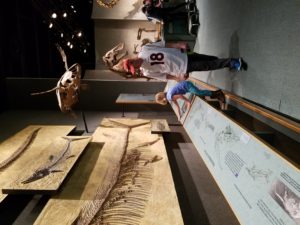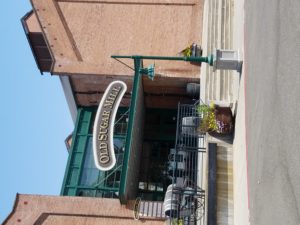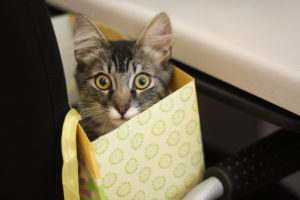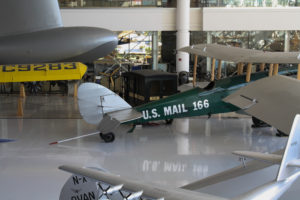
There are aviation museums and then there’s this one…
With displays ranging from the elegant aeronautic designs of Orville and Wilbur Wright, to an actual Lockheed SR-71 Blackbird that can fly at speeds of over 2,000 miles per hour, the Evergreen Aviation & Space Museum located in McMinnville, Oregon, has a little something for everyone.
With two impressive museum buildings and a theater, you should plan a full day of exploring here. Founded in the memory of Captain Michael King Smith, exhibits celebrate the lives of innovators, pilots, and veterans who courageously pioneered flight in some pretty remarkable machines.
The centerpiece of these aeronautic breakthroughs is the original Spruce Goose. Built entirely of wood due to wartime restrictions on metals, this massive airplane stands as a symbol of American industry during World War II.
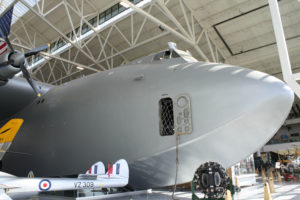
The largest wooden airplane ever constructed, and flown only one time, the Spruce Goose represents one of humanity’s greatest attempts to conquer the skies. It was born out of a need to move troops and material across the Atlantic Ocean, where in 1942, German submarines were sinking hundreds of Allied ships. Henry Kaiser, steel magnate and shipbuilder, conceived the idea of a massive flying transport and turned to Howard Hughes to design and build it. Hughes took on the task, made even more challenging by the government’s restrictions on materials critical to the war effort, such as steel and aluminum. Six times larger than any aircraft of its time, the Spruce Goose, also known as the Hughes Flying Boat, is made entirely of wood.
Originally designated HK-1 for the first aircraft built by Hughes-Kaiser, the giant was re-designated H-4 when Henry Kaiser withdrew from the project in 1944. Nevertheless, the press insisted on calling it the “Spruce Goose” despite the fact that the plane is made almost entirely of birch.
The winged giant made only one flight on November 2, 1947. The unannounced decision to fly was made by Hughes during a taxi test. With Hughes at the controls, David Grant as co-pilot, and several engineers, crewmen and journalists on board, the Spruce Goose flew just over one mile at an altitude of 70 feet for one minute. The short hop proved to skeptics that the gigantic machine could fly.
Perhaps always dreaming of a second flight, Hughes retained a full crew to maintain the mammoth plane in a climate-controlled hangar up until his death in 1976.
The Spruce Goose was kept out of the public eye for 33 years. After Hughes’ death in 1976, it was gifted by Hughes’ Summa Corporation to the Aero Club of Southern California. The Aero Club then leased it to the Wrather Corporation, and moved it into a domed hangar in Long Beach, California.
The Disney Company acquired the Wrather Corporation, thus taking over the lease of the Spruce Goose. Evergreen subsequently bought the aircraft from the Aero Club.
In 1992, Evergreen Aviation & Space Museum co-founders Michael King Smith and Delford M. Smith submitted the winning proposal to provide the aviation icon with a proper home. The Flying Boat was disassembled and transported by barge up the West Coast, then up the Columbia and Willamette Rivers, to Portland, Oregon. It remained there for several months, until water levels permitted the huge structures to safely pass under the Willamette’s many bridges.
Finally, in February 1993, the aircraft was transported by truck for the last 7.5 miles to McMinnville, Oregon. Temporary hangars were built as housing for the aircraft, while volunteers worked on the aircraft’s restoration. In 2001, re-assembly of the Hughes Flying Boat was completed in its new home.
This massive plane fills you with awe and wonder. But, that’s not all that’s here…
B-17 Flying Fortress
Best known for its surprisingly successful daylight raids on Germany during World War II, the B-17 bomber, also known as theFlying Fortress, withstood a storm of anti-aircraft fire to help ensure victory.
World War II Aircraft Area
Immerse yourself in history with rich stories and beautiful artifacts from World War II on display throughout the Aviation Museum WWII Aircraft Area.
Titan II Missile
Explore this large booster rocket from inside its missile silo, and then experience the excitement of a simulated launch sequence from the launch room.
SR-71 Blackbird
One of the world’s fastest aircraft, this high-altitude reconnaissance plane flew at the very limits of the earth’s atmosphere at speeds well over 2,000 miles per hour.
Check out the space travel exhibits…
The Evergreen Space Museum transports you back to a time when travel to the stars was just a dream, and then winds you through history from miniature rockets launched from remote farms to the robotic spacecraft we know today. See the artifacts and spacecraft up close – from rocket booster systems to manned and unmanned spacecrafts.
Early & Earth Bound Rockets
The first milestone of space travel took place, not on the coast of Florida, but on a New England farm field, where on March 16, 1926, a flimsy, liquid fuel-driven structure lifted off and flew 41 feet into the sky – so began man’s journey to the stars. Learn more about the earliest achievements in space exploration with our historic exhibit.
Boosters
Whether the payload is a atom bomb or an astronaut, the first step into space is the rocket booster which propels the vehicle into space. These increasingly huge engines unleashed the massive thrust necessary to break away from earth’s gravity and start the exploration of space.
Manned Spacecraft
In 1961, the first man left the earth’s atmosphere to explore space. Since that time, man has navigated planets, orbited the earth, and walked on the moon. Follow humanity’s footsteps into space with our elaborate exhibit that explores the history manned space flight.
Unmanned Spacecraft
Robotic spacecraft has carved the way for extensive space exploration in ways that manned spacecrafts cannot. From visits to the sun to exploration of planets, unmanned spacecraft have provided valuable data to further our knowledge of the universe. Follow this remarkable trajectory from the earliest unmanned craft to plans for the future with our various displays and exhibits.
Like I said…plan on a whole day here.
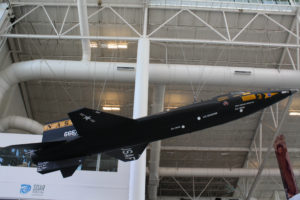
If You Go: Located at 500 NE Captain Michael King Smith Way in McMinnville, OR. Hours are 9 to 5 daily. Website is http://www.evergreenmuseum.org/
